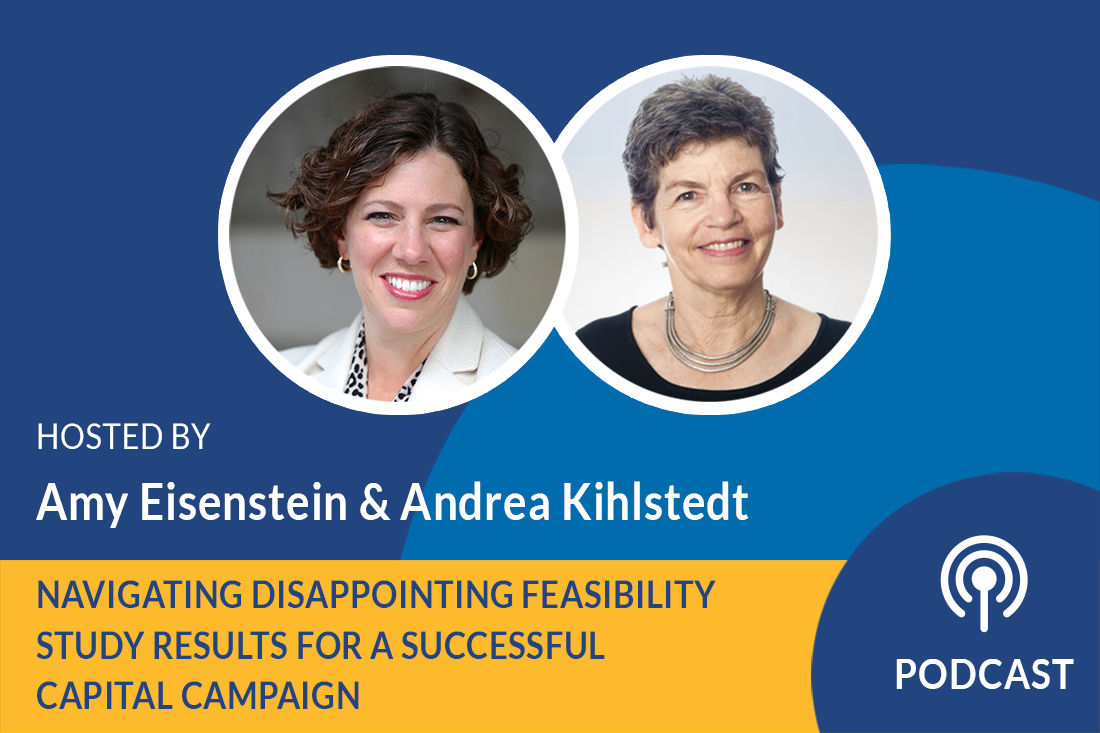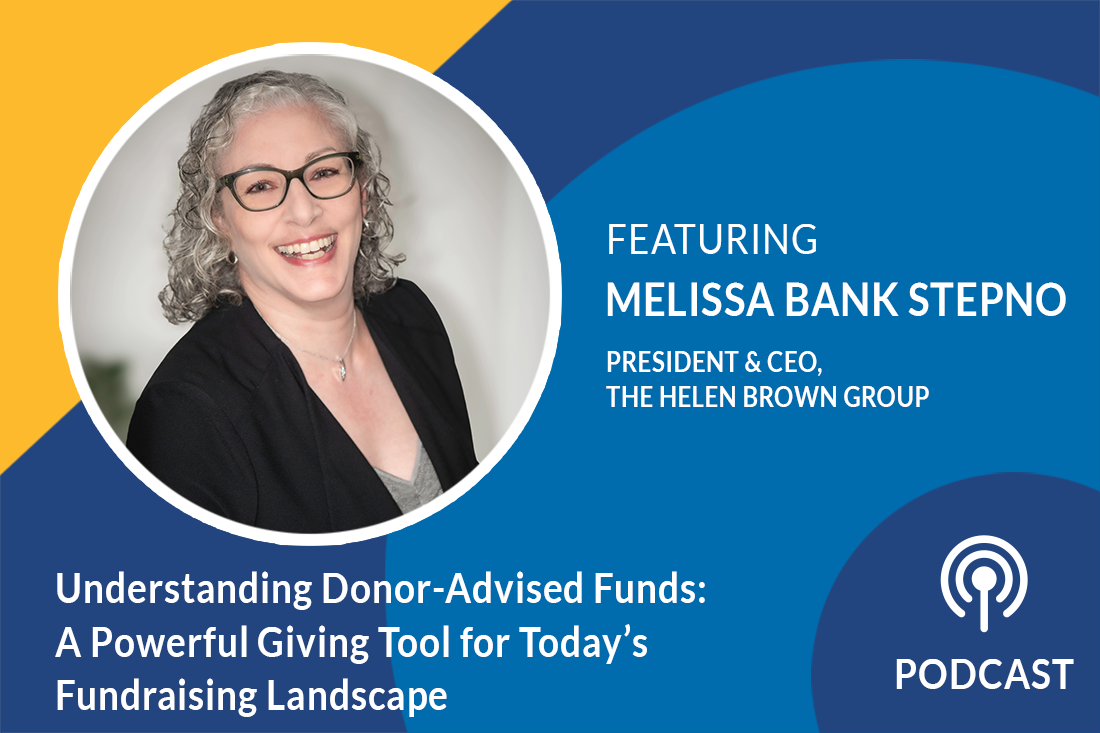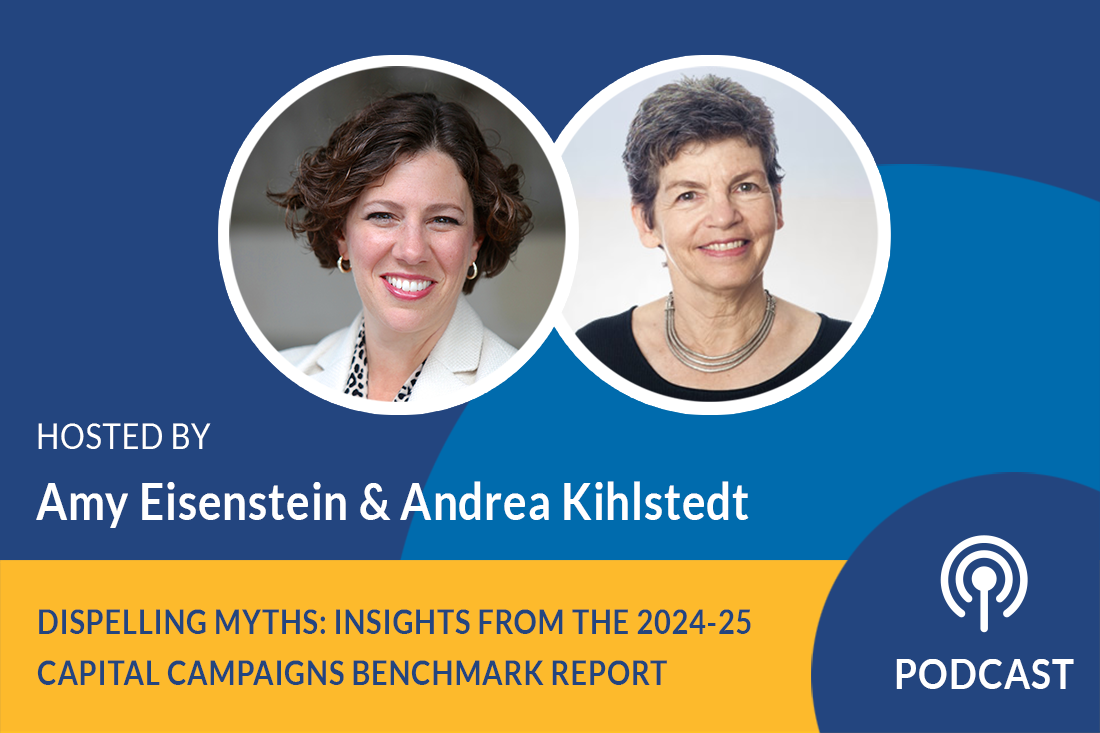Podcast: Navigating Disappointing Feasibility Study Results for a Successful Capital Campaign

Season 3, Episode 43
In this episode, Amy Eisenstein and Andrea Kihlstedt discuss what to do when your feasibility study results are disappointing. They emphasize the importance of not letting fear of disappointing results deter you from conducting a feasibility study, as it provides crucial data for making informed decisions.
They share insights on how to handle such situations, including avoiding magical thinking, exploring alternative funding sources, and considering project phasing. They stress the significance of engaging key donors and maintaining a campaign mindset to turn challenges into opportunities for success.
Don’t miss this valuable advice on planning a successful capital campaign, even when faced with unexpected results. Tune in now!
Listen Now:
Andrea Kihlstedt:
Did your feasibility study report come back with disappointing results? If so, what in heaven’s name should you do now?
Amy Eisenstein:
Hi, I’m Amy Eisenstein. I’m here with my colleague and co-founder, Andrea Kihlstedt. And today we are talking about disappointing feasibility study results.
Don’t Allow Fear to Deter You from Doing a Feasibility Study
This is such an important topic because I think every board and probably many executive directors are concerned about doing feasibility studies because they’re worried that the results will be disappointing. And I have to say, that is not a good reason not to do a feasibility study, because what happens in those cases is organizations plunge ahead with a campaign really blindfolded. They have no idea what they’re headed into, they have no data analysis, information to make good decisions.
So that’s what a feasibility study does, among other things, it helps you make a solid plan, make good decisions, and so don’t let the fear of disappointing results stifle you from going ahead with a feasibility study.
All right, Andrea, what do you want to add to that before we dive in?
Aim and Test High, Not Low
Andrea Kihlstedt:
Yes. So here’s what I want to add — when you do a feasibility study, you should aim high. You should test high, you shouldn’t test low. You have not failed if the results come back lower than you were testing, that’s okay.
You’re trying to find out what the uppermost bounds are of what you can raise through your campaign. And if you test low, and it turns out the study comes back saying, “Yes, you can do that,” you still don’t know how much you might have raised had you had a more far-reaching goal, a higher goal that you were testing.
So if your feasibility study comes back lower than you had hoped for, it doesn’t mean you failed. It means that you learned important stuff and now you can adapt your program, your campaign, your fundraising plan to fit some reality based on donor conversations. So don’t be upset, don’t think you’ve failed. You’ve done it just right.
There’s no harm in testing high and learning that you can’t quite go that high. Now, what should you do? Where should we start, Amy?
Amy Eisenstein:
Yeah, I think listeners may be in the middle of feasibility study or they already tested the exact amount of their project, and so they didn’t take your advice and test high, they tested exactly what they needed, or in some cases what they thought they could raise, and then disappointing results are really disappointing.
Pay Attention to Feasibility Results and Beware of Magical Thinking
So I think our first takeaway — and we have many — is be careful of magical thinking. So the idea is that if you really did talk to your biggest potential donors, you talk to the right people in the community, you talk to the people who really have the financial ability and the wherewithal to make your project happen, don’t discount that. You need to pay attention to those results. So one thing that organizations tend to do when they get disappointing results is say:
“Well, we’re going to go ahead anyways. We don’t care what the study said.”
So what are your words of caution around that?
Andrea Kihlstedt:
A little bit of magical thinking in any campaign is fine, but only a little bit of it. You have to base your campaign on some real checks. You can’t wake up and say:
“Well, the study didn’t work because we didn’t talk to our Oprah Winfrey yet. Of course, we don’t know who our Oprah Winfrey is.”
That’s magical thinking.
So there’s an old phrase that we used to use that’s something like hope is not a plan and prayer is not a strategy, and that’s really right. You came up with a plan, you tested your plan, you need to take seriously what it is you’ve found. So magical thinking is not what you need to be doing.
Remember There Are Other Ways to Fund Your Project
There are of course other important things that you should be doing, one of which is looking at various other ways that you might fund this project. Philanthropy doesn’t have to be the only source of revenue that you’re looking at to fund your project, there may be other perfectly acceptable revenue streams, and now is when you should be looking at other funding models for your project to see what might be possible.
What kinds of things would you suggest, Amy?
Using Reserves
Amy Eisenstein:
I think the first thing to do, of course, is look and see if the organization has any reserves that you might use. The board may or may not have wanted to use those reserves, but it might be time to explore that possibility now.
Financing Options
If your feasibility study results are disappointing, but you do have some money in the bank that could be applied to this project, the next step of course is talk to financial advisors and bankers and find out how much of a mortgage are you eligible for, how much could you afford to take as a mortgage. There’s no shame or harm in financing part of a project through financing.
And so taking a mortgage out on a building or a renovation is a perfectly reasonable strategy to fund a project if that’s something that you can afford to do.
Government Grants
There’s, of course, government grants. Now, you may or may not get those, but it’s important to look into that as a potential option for funding your project.
So to your point, the whole project doesn’t have to be funded philanthropically. It would be great if it was, but if it’s not, there’s lots of alternative funding sources.
Private Investments
Andrea Kihlstedt:
You can even look at private loans or impact investments. There are organizations that actually have options for donors to actually invest in the organization and get a small return on their investment. So this is the time to be creative about financing, about, okay, how can we make this project work so it doesn’t rely so heavily on philanthropic revenue on the campaign where the campaign is only a part of the revenue that is going to fund the project.
Now, when that happens, of course, when you have a sense of how you can do that, that will help you lower your capital campaign goal and still do the project effectively. There are some people who are really very good at creating financial models for projects, and if you have someone on your board or someone in your community, or you can identify someone in your community who would help you develop various financial models, this would be the time to do that.
Amy Eisenstein:
I think that’s a great suggestion. It’s always important to have an A, B, C plan. So A is if we raise X amount, and B is if we raise a little less than that, and C is if we don’t raise nearly as much as we hope, what happens? What happens to the goal? What happens to the project? What are the alternative funding sources?
And so looking at all of those in advance is an important part of the process of planning for a successful campaign.
Adjusting the Cost of the Project
Andrea Kihlstedt:
The other thing that happens at the same time, or that can happen if you’re doing a building campaign, for example, is that you can get your designers, your architects to go back and say:
“Is there a way that we can re-engineer this project so it’s not going to cost us as much? Can we do the most important parts of the project now and look down the road five or ten years from now to do other portions of the project?”
So you can be looking at your financial possibilities, and you can be looking at the possibilities of the actual project itself, seeing if you can lower some of those costs.
Now, be aware that these days, any days, not just these days, projects tend to cost more than you think they’re going to. So you have to be very careful again about wishful thinking, scaling back the prices, understanding that the prices are likely to go up as you go through the building project itself.
Amy Eisenstein:
Historically, we’ve talked about a 10% contingency in construction costs, but, honestly, we’ve seen 20% contingency. So while you’re adjusting and scaling back the project, be aware that it will cost more than you think, even if you don’t do the second story or the gym wing or something gets scaled back at this point.
So that’s considered phasing the project. You might do the main building now, and in five years you can do the next wing or whatever the case may be.
Delay the Project and Build Stronger Donor Relationships
One more suggestion that we have, if you really have gotten disappointing feasibility study results, when we talk about the right people — I want to go back to that for just a minute before we move on to our final point:
- Who did you talk to?
- Who accepted interviews?
- Who was willing to talk to you?
- Who did you identify?
If you left out the top philanthropists in your community, either because you had no relationship with them or they wouldn’t take a meeting with you, really think about why did you get these disappointing results.
So one more possibility is delaying the campaign and delaying the project by a year or two while you take time to build relationships and develop those relationships with the key people that have the ability to make your project successful and see if you can approach it that way.
But ignoring the fact that you got these disappointing results and plunging ahead without a real plan is going to put you in a real pickle a year or two from now when you’ve raised 40, 50, 60% of the funds, and then find that you’re stuck. Without lead donors for your project, you cannot make it successful.
Get into a Campaign Mindset – Fully Engage Your Donors
Andrea Kihlstedt:
I think that’s so important. And a couple of episodes ago of this podcast, we did something on campaign mindset, remember? So I’d like to wind that into this conversation for a minute and think about the fact that the feasibility study results that come back, even if they are not what you had hoped for, are often wonderful opportunities to sit down with some of your lead donors and say:
“Help us figure out the best way forward. Here are three different approaches that we’re considering. Would you serve on an ad hoc committee to come and have a conversation with us and give us your guidance about how you think we might move forward?”
That’s campaign mindset. Campaign mindset is the process of using every opportunity to engage the people who have the capacity to give significant gifts and make a difference in your project in the campaign itself, not just for their money.
So when you have a challenge, a problem, something that isn’t going quite right, that’s a wonderful time to pull some of these people together and get their advice and suggestions. Sometimes just from doing that, you unearth a lead gift that hadn’t been there before.
Amy Eisenstein:
Yes, we see it again and again.
Andrea Kihlstedt:
So don’t forget about campaign mindset.
Amy Eisenstein:
It’s amazing. Listen, I really want to encourage you, if you’re considering a campaign, if you’re not sure about a feasibility study, go to the Capital Campaign Pro website and you’ll find feasibility studies under there, and there’s a four-minute video talking about why feasibility studies are so important, and I would love for you to go check it out.
If you have board members or your executive director is not sure whether or not you should do a feasibility study, go ahead to the Capital Campaign Pro website. We’ve got tons of free resources and information about why and how we approach a feasibility study.
Andrea Kihlstedt:
And remember, if your feasibility study comes back saying, “Gee, your stretch goal doesn’t look like it’s possible now,” you haven’t failed. You’ve learned something really important, and it’s just going to point you down the road to figuring out how you’re going to address that and what you’re going to do next, that’s going to lead you to a successful campaign and a successful project.
Amy Eisenstein:
Brilliant!
Thank you so much for joining us, thanks for tuning in today, and we’ll see you next time.



Leave a Comment